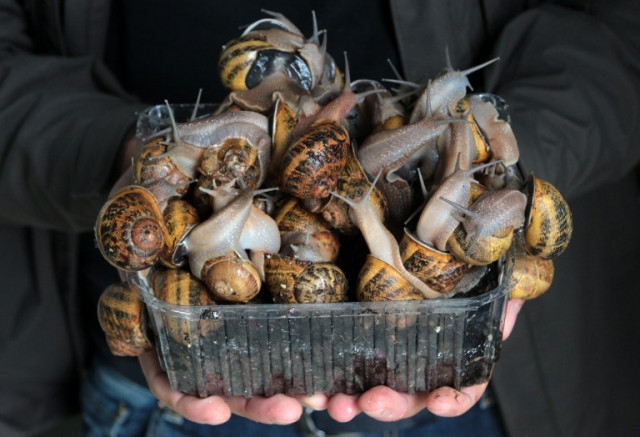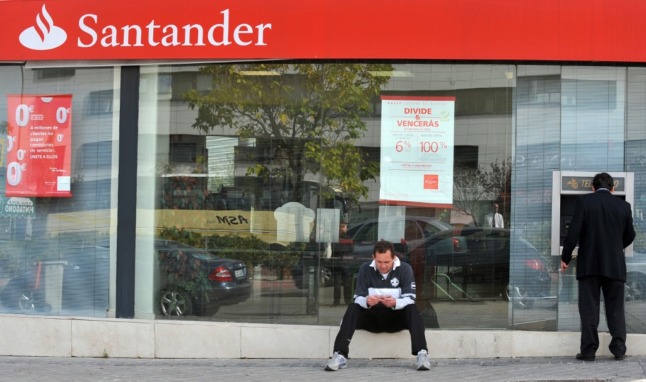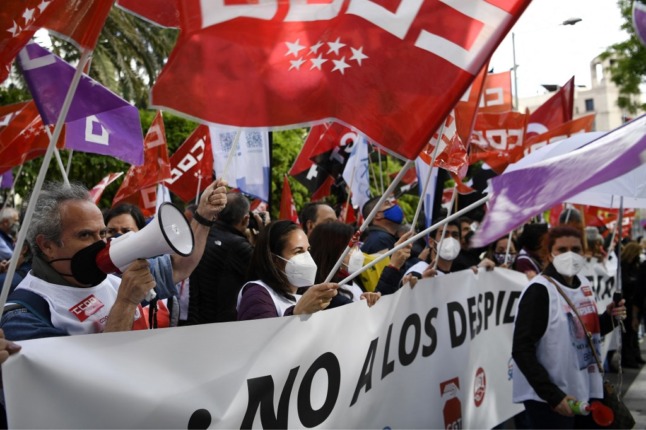Festivals
April Fair Seville, May 4th – 11th
 Photo: Jorge Guettero / AFP
Photo: Jorge Guettero / AFP
The only people the can out-do Sevillanos during Semana Santa are Sevillanos during the legendary April Fair. For one week the “Real de la Feria,” a huge area of the city is transformed into an amusement park with “casetas,” or canvas tents where important local families, friends, businesses, and political parties host parties that last all day and all night. This extraordinary spectacle is not for the faint hearted, with dancing, drinking, eating, and socializing taking place from early in the afternoon until sunrise every day of the fair.
Need a guide to navigating this festival? Read All the fun of the fair: A Guiri's guide to Spain's ferias
Patios de Córdoba (Córdoba courtyards festival), Córdoba, May 6th- May 19th
.
Photo: philipus/Depositphotos
The citizens of Cordoba will be competing for the prize of who has the most lush courtyard, decorating their patios with bright flowers, leafy green plants, fountains and more. The tradition dates back to 1921 with the town hall organizing a competition, along with music, dancing and wine.
Feria de Jerez (also known as the “Horse Fair”), Jerez de la Frontera, May 11th- 18th

Photo: AFP
Originally a livestock fair, the wonderful feria of Jerez is much more open than its more famous cousin – that held in Sevilla – as the casetas (temporary structures) are public so anyone can walk in and enjoy the food, drink and the dancing. Expect endless glasses of fino and dancing until dawn.
Titirimundi International Puppet Theatre Festival, Segovia, May 10th-15th
Se acerca el mejor festival de títeres “Titirimundi”, en #Segovia. ¿Quieres ver el programa y los participantes?: https://t.co/JL9IIE9nw2 pic.twitter.com/bct3Y5PPX5
— Segovia un buen plan (@Segoviabuenplan) April 27, 2018
For five days in May, the medieval city of Segovia is transformed in this annual event for puppet enthusiasts. International puppet theatre groups stage performances across the city from traditional puppetry, to street theatre to acrobatics. Fun for all the family.
Fiestas de San Isidro, Madrid, May 10th-15th

Photo: nito103/Depositphotos
 Photo: Pablo Guzmán Torres/ Flickr
Photo: Pablo Guzmán Torres/ Flickr
For a few days in May, walking through the old walled city of Ibiza is like stepping back in time. The streets are filled with craft markets, wizards, witches, knights, princesses, princes and dragons. With displays of falconry, jousting tournaments, jesters and jugglers. All accompanied, of course, by wonderful food and drink.
Recitales poéticos,lecturas e improvisaciones en la programación de Womad #Cáceres https://t.co/qeWVN4YWl1 pic.twitter.com/GxtcI0uxEX
— eldiario Extremadura (@eldiarioex) May 1, 2018
Cáceres in Extremadura offers one of the world’s more unique music festivals as it is set within the historical walled city. And the three-day festival is completely free!
L’Aplec del Caragol, Snail gastronomy festival, Lleida, May 31st – June 2nd

Photo: AFP
For three days, thousands of locals from Lleida in Catalonia celebrate the gastronomic delicacy, the snail!. More than 200,000 people take part in the fiesta, consuming around 12 tonnes of snails. But there's also music, fireworks and lots of fun street entertainment.
Mutua Madrid Open, Madrid, May 3rd-12th
.jpg) Photo: AFP
Photo: AFP
A chance for tennis fans to see Rafa Nadal play on his home turf (clay) in this Masters competition. Held in the Caja Mágica, the tournament attracts all the big names from the tennis circuit.
Spanish Grand Prix, Barcelona, Sunday May 12th

Photo: Josep Lago/AFP.
The Formula 1 race held at the Circuit de Barcelona-Catalunya is one of the oldest in the world and celebrated its centenary in 2013. A must for petrol heads.





 Please whitelist us to continue reading.
Please whitelist us to continue reading.